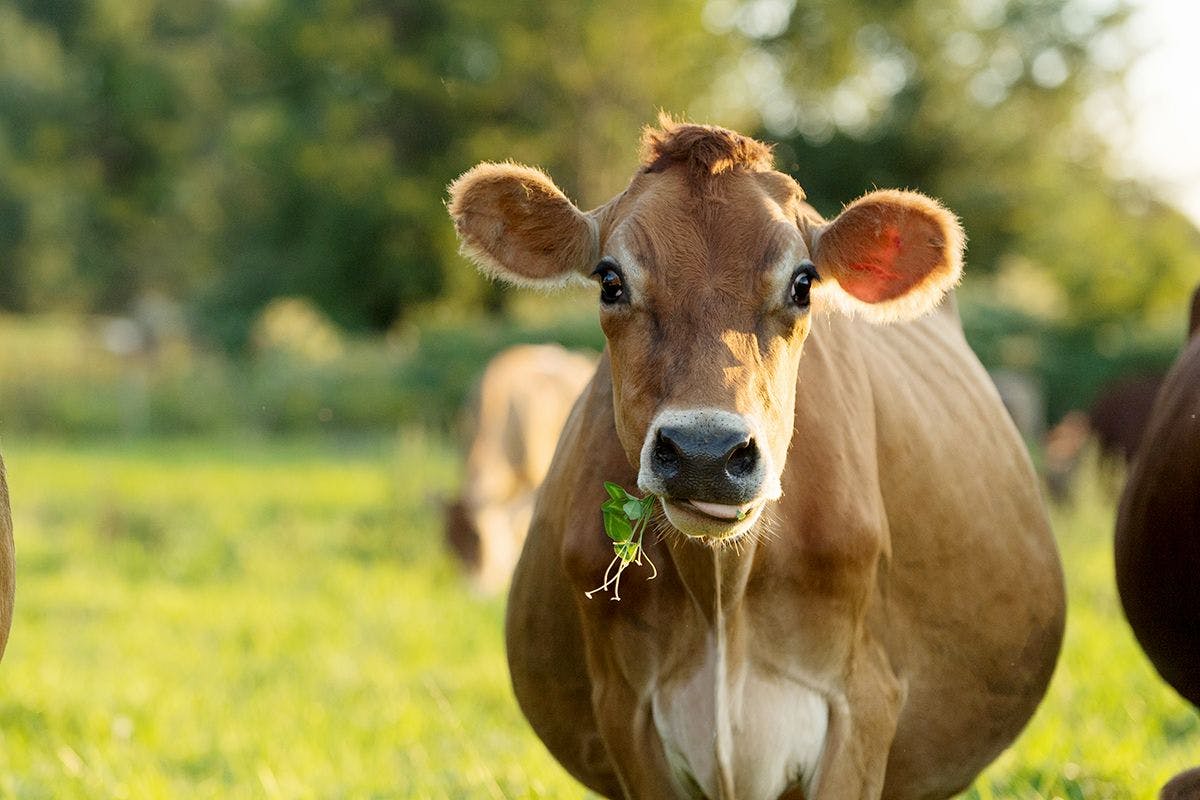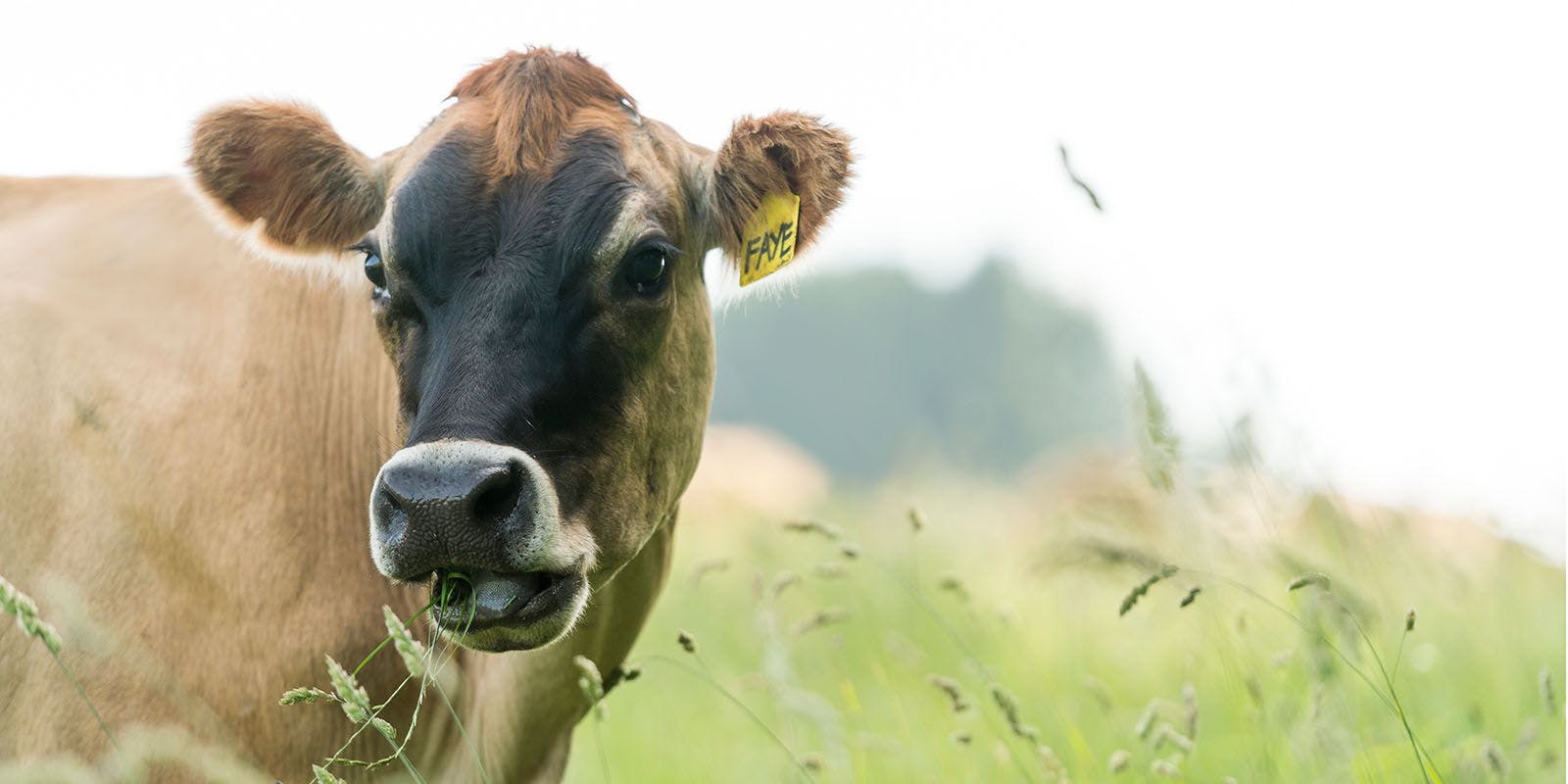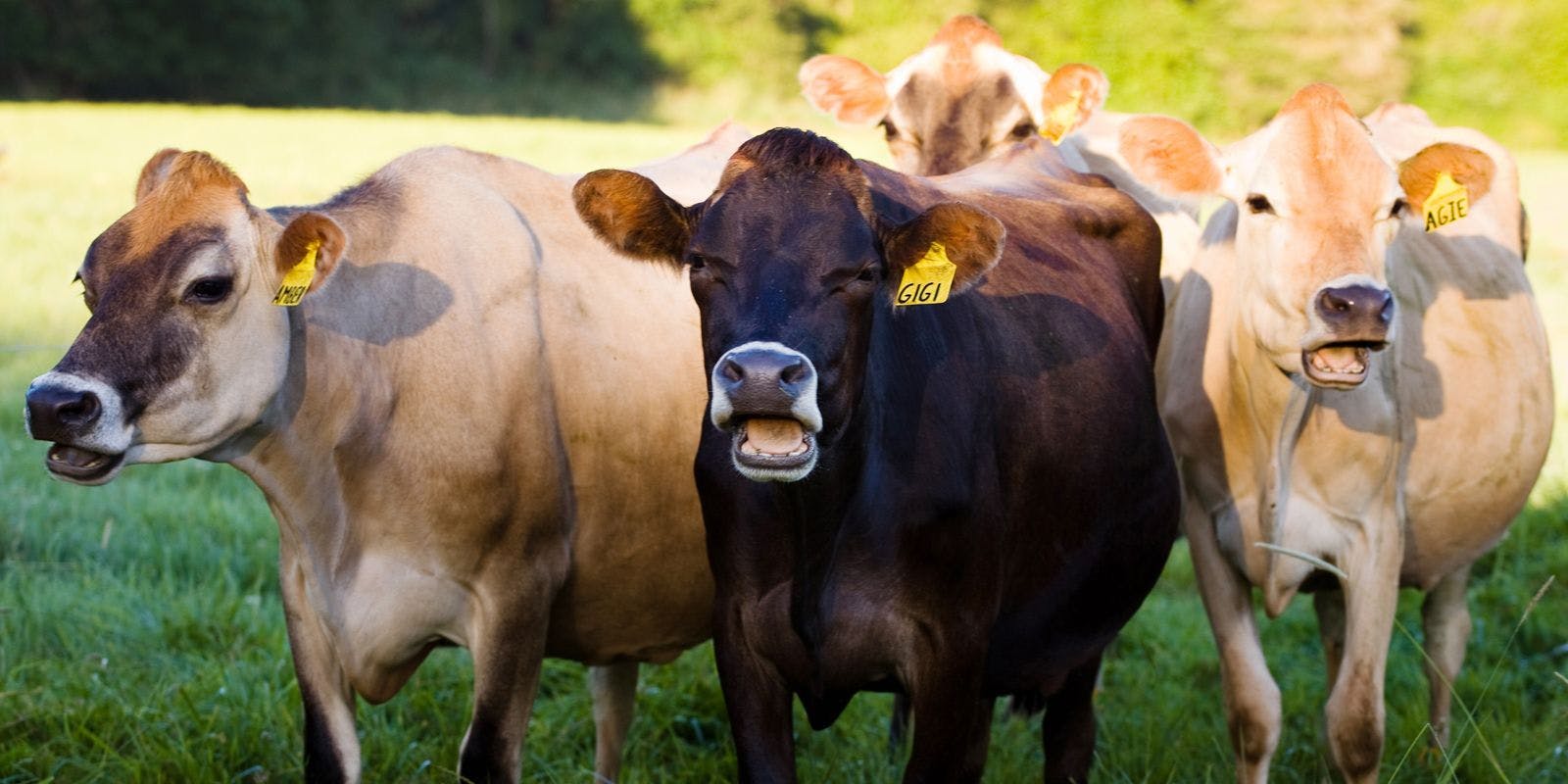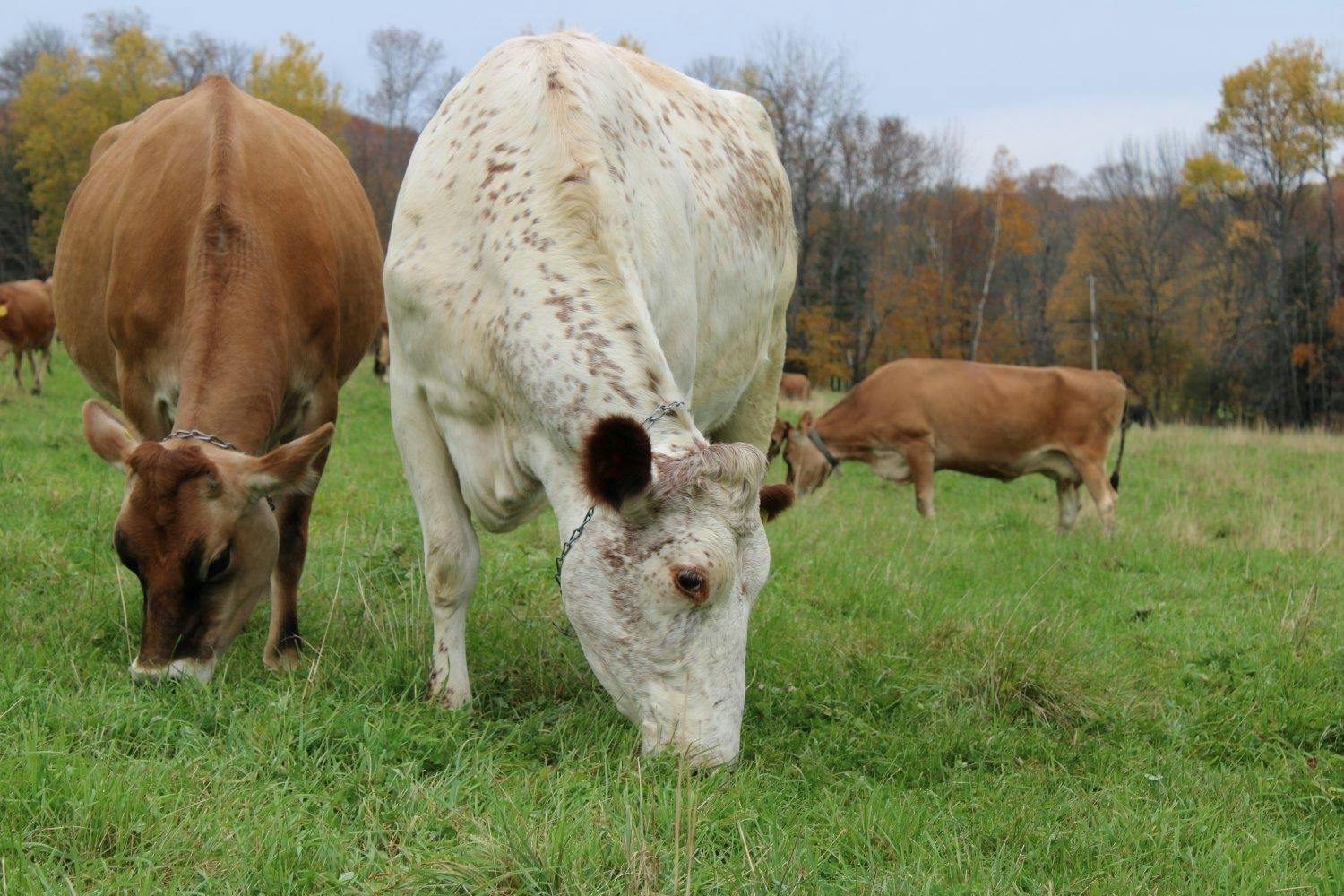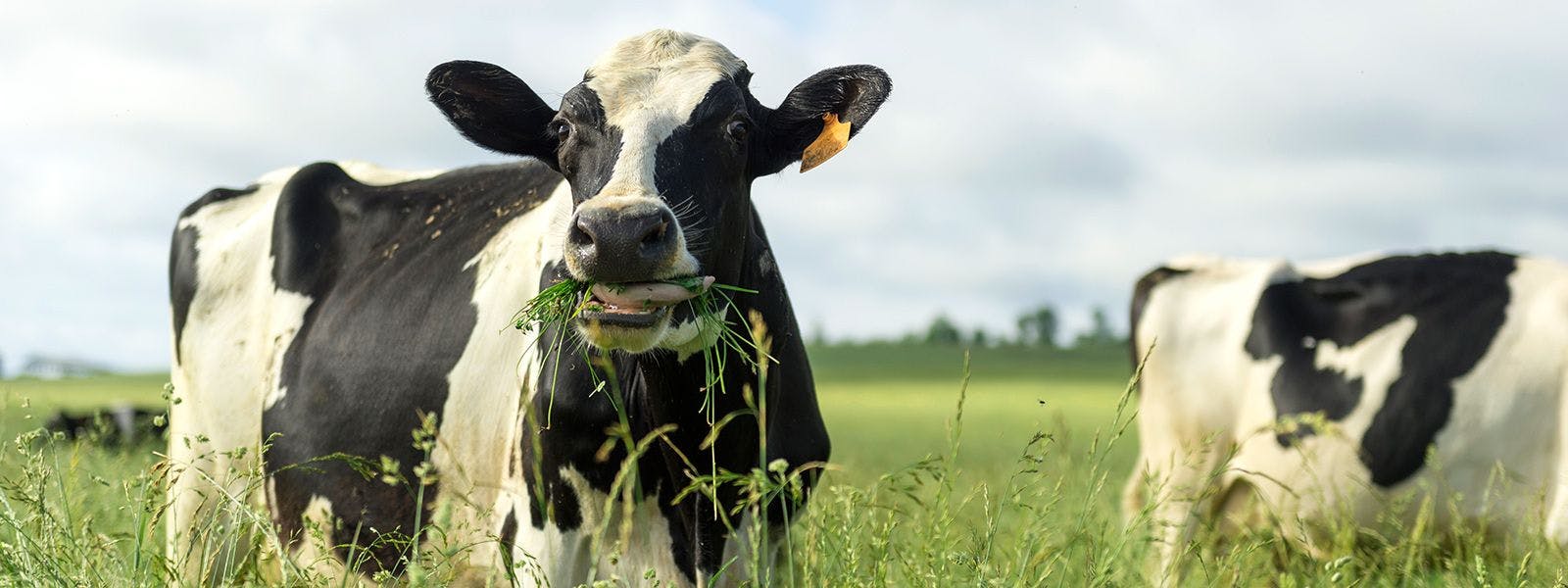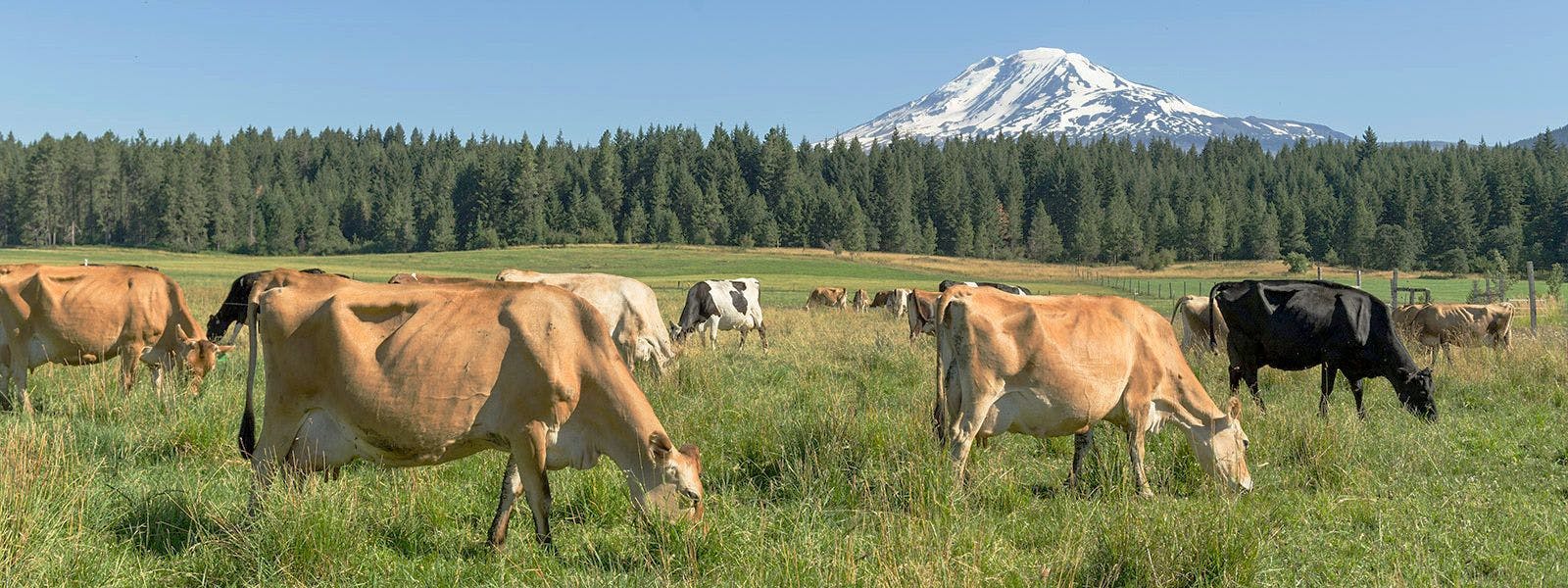
Farming
Cow Chow: What do our dairy cows love to eat?
Ever wonder what dairy cows eat?
The simple answer is “mostly grass,” but “grass” can include a LOT of different plants! In fact, Organic Valley farmers shoot for a ratio of 60% grasses and 40% legumes in their pastures. Pasture definitely does not look like your backyard lawn.
Dairy cows need a high-calorie diet. Anyone who’s been through a pregnancy understands that. Being pregnant and making milk require tremendous amounts of energy in the form of calories, plus all the necessary vitamins and minerals a cow’s body needs to thrive. So how do Organic Valley cows get the calories and nutrients they need? Let’s dig in to find out!
If a cow walked into a restaurant, she’d order dessert first
Most of us think a cow would like any old grassy-looking plant, but she has her favorites, just like we have favorite foods.
If a cow walked into a fancy restaurant, the first thing she’d order is dessert. Dessert to a cow would include grasses like ryegrass, orchard grass, meadow fescue, and warm-season grasses like sorghum and sudangrass. These plants tend to have higher sugar content in their leaves, providing the fiber and complex carbohydrates a dairy cow needs each day.
Our farms, particularly our 100% grass-fed Grassmilk® farms, may also give their cow-diners access to molasses, which they love the smell and taste of. Grasses provide complex carbs while molasses provides simple carbs for quick energy, healthy digestion, and to support milk production.
Some Organic Valley farmers provide their animals with a grain ration to provide additional calories along with their pasture and forage diet. Grain mixtures would also be considered “dessert” and can include the usual organic corn and soy as well as some healthy small grains, like organic barley, rye, and oats. On Organic Valley farms where grains are fed, the majority of a cow’s diet still comes from fresh, dried, or fermented grasses. These cows provide the milk for Organic Valley Pasture-Raised Milk products.
Related: More about Pasture-Raised: Cows Belong in the Fields
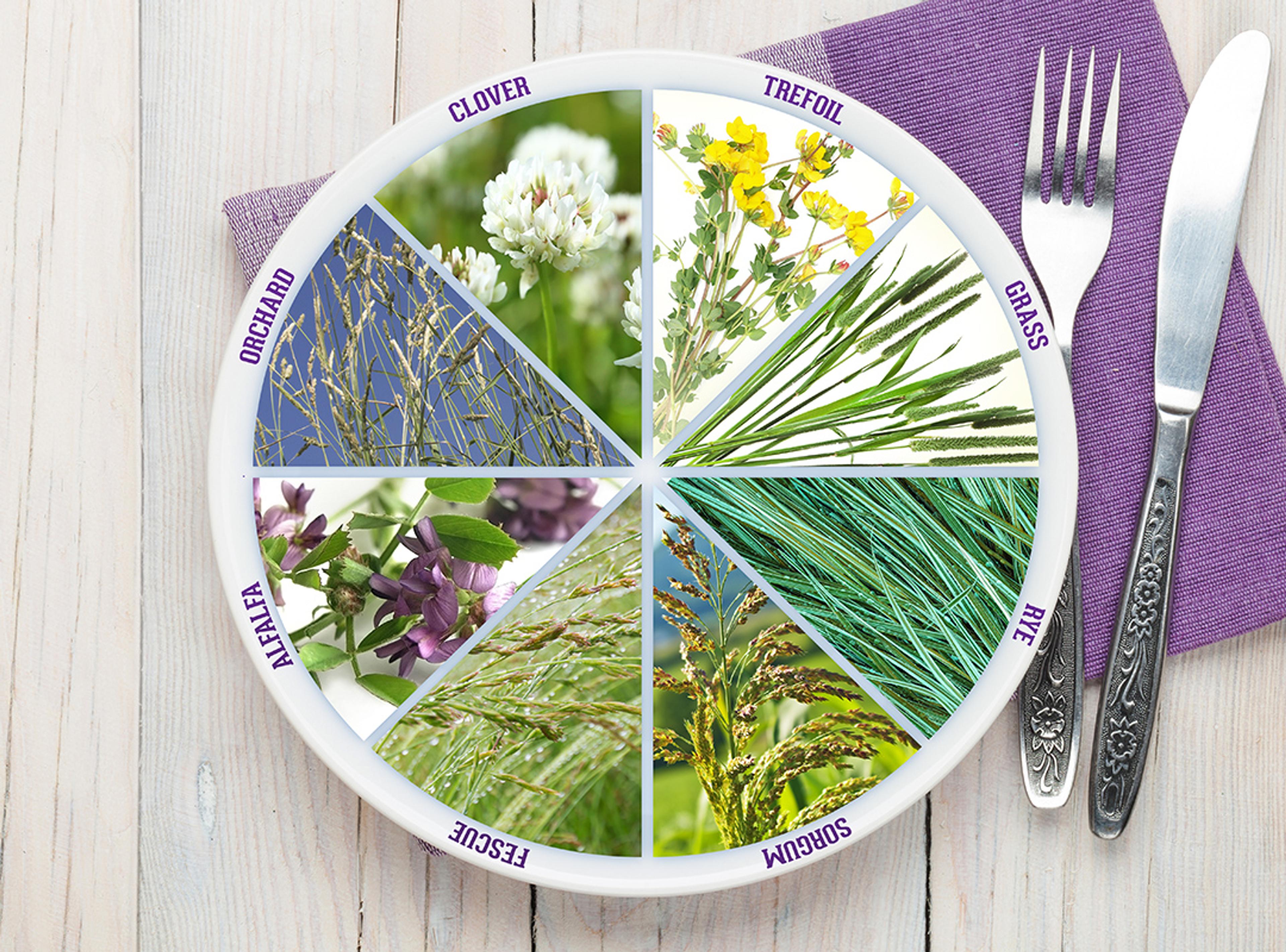
The main course: Legumes
Legumes like alfalfa have a high protein content, so you could call these her entree. She’ll also go for birdsfoot trefoil, a deep-rooting legume plant full of minerals pulled from the soil. (The better the soil, the more nutritious—and tasty—the plants will be!)
She’ll brush through pasture plants with her nose, using her whiskers and extraordinary sense of smell to find these tender, nutrient-rich plants.
Sorry kids, er, cows. Gotta eat your veggies.
Just like with kids, cows can’t live on dessert alone. They need a balanced diet, too. In fact, too many dessert-like legumes can upset a cow’s four tummies. She needs to munch on good quality grasses along with the legumes.
Sixty percent grass and 40% legumes is the ratio Organic Valley farmers shoot for in their restaurants … er … pastures. A cow digests her food best when it consists of a mix of plants that provide quick and intermediate release of calories, along with plants that provide bulk or fiber.

Tranel family farm, Wisconsin
What about Organic Valley Grassmilk®? What do those cows eat?
Simple! Our Grassmilk® cows eat a 100% grass-based diet plus a few supplements and molasses to round out their nutrition. Cows evolved to live on grasses, and their four-chambered stomachs digest plants more easily.
On farms that have the high-quality soils and enough acreage to accommodate an exclusive diet of pasture grasses, the farmers tempt their cows with a smorgasbord of plants that provide broad nutrition and energy from the robust green pastures. Grass-based farming is an art!
Milk from our 100% grass-fed cows goes into Organic Valley Grassmilk® dairy products.
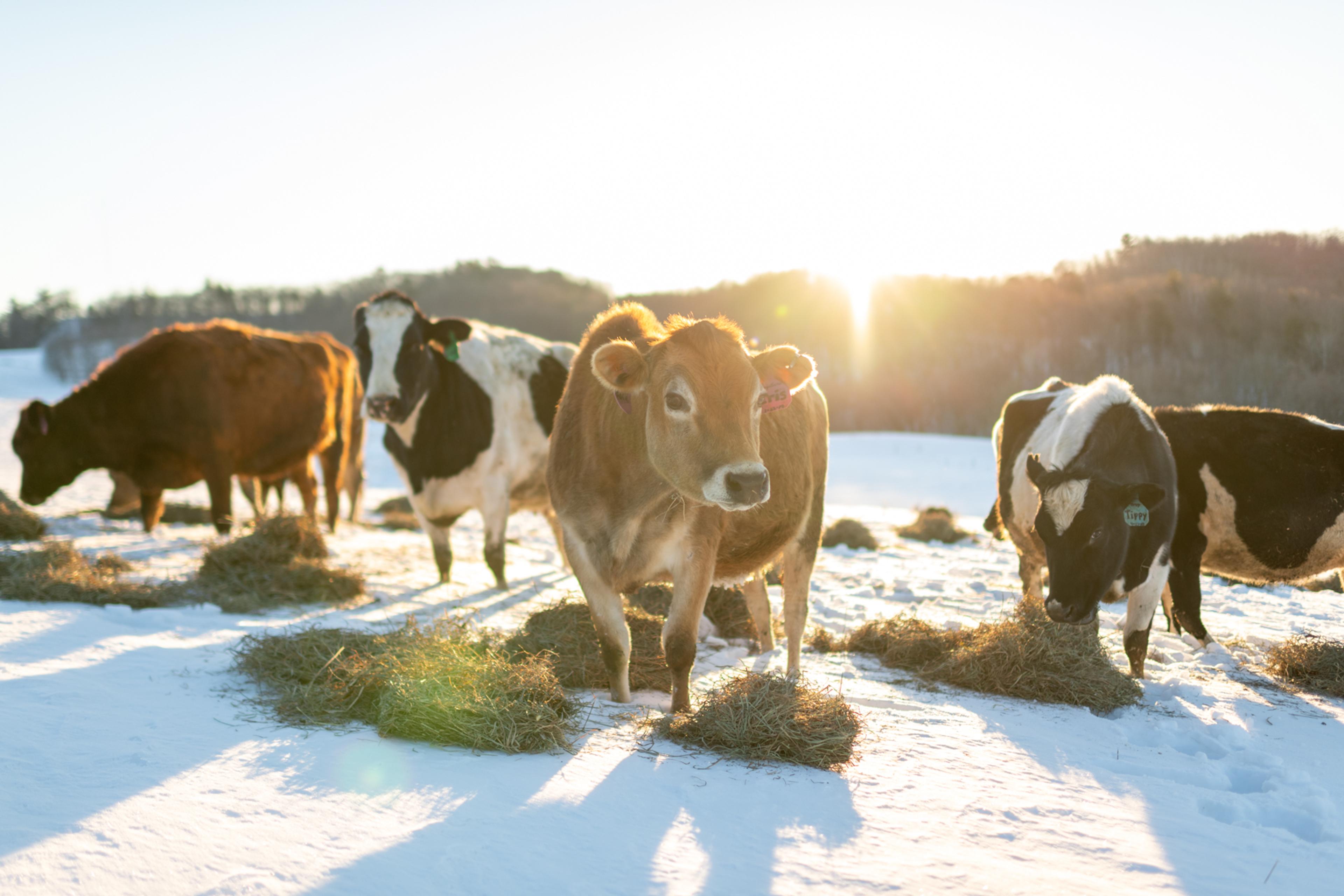
Cows enjoy dried forages out on their winter pasture on the Koenig family farm in Wisconsin.
What do Organic Valley cows eat in winter?
Obviously, farms in northern climates can’t keep a ginormous heat lamp going over their pastures in winter (though, wouldn’t that feel lovely?). The cows still get to go outside for sun and fresh air, but their diets are a little different.
For farms that feed grain as well as pasture grasses, cows get grains along with dried and partly dried winter forages. Think hay and silage. Our 100% grass-fed Grassmilk® farms feed their cows dried forages, fermented silage, and some organic supplements in the wintertime, but no grains.
Related: How are Cows 100% Grass-Fed in Winter?
What the heck is silage?
Silage is a fermented version of green plants. Ever driven out in the country past farms and seen big bales of white-wrapped stuff or long snaky tubes lying in a field? That’s silage in the making.
Fermenting preserves the harvested plants for longer-term storage, and as an added benefit, the fermentation makes it easier for cows to digest and absorb more nutrition.
Our cows take vitamins, too
In addition, farmers will also provide important vitamins and minerals, like a salt-kelp blend or a calcium-phosphorus mineral mix. These are often provided so that cows can choose to eat them or not, depending on how she’s feeling.

Does a cow’s diet impact human health?
Absolutely. As we like to say, when cows eat well, you do, too! Cows feasting on a super-nutritious mix of plants translates to higher levels of omega-3 and conjugated linoleic acid (CLA) in the milk. The benefits of omega-3 and CLA are pretty well documented; a quick online search yields a ton of info, but here’s a quick summary of the findings from one study measuring the omega-3s and CLA in Organic Valley Grassmilk®.
Add to that the naturally occurring 13 essential nutrients in milk, and the fact that all of our cows and everything they eat is certified organic, which means absolutely NO antibiotics, added hormones, synthetic pesticides, or GMO anything.
We’re glad you’re out there asking the important questions about how what you eat impacts your health. We hope you’ll check out some of the related links below to learn more. Thank you for choosing Organic Valley!
Related Articles
- Tags:
- animal care













